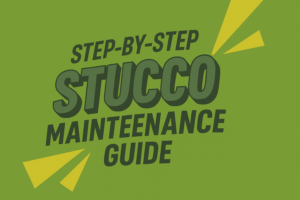Second Mortgage vs. Home Equity Loan: Is There a Difference?
As a homeowner, it’s likely you’ve been paying your mortgage payments for some time and feeling good about the equity you’re building. Now, something’s come up. You may need money to renovate, make repairs, cover a large expense, or make a major purchase, such as an RV, or even to buy another home.
You’re pondering: second mortgage vs. home equity loan. But what do these terms really mean for you? In this guide, we’ll clarify these homeowner borrowing tools and help you determine which option might be best for your situation.
Second mortgage vs. home equity loan
There’s often confusion about the terms “second mortgage” and “home equity loan.” In reality, a home equity loan is a type of second mortgage. Similarly, a home equity line of credit (HELOC) is also considered a second mortgage.
Both home equity loans and HELOCs use your home as collateral, but they offer different features and benefits. In the following sections, we’ll clarify these concepts and explain when and how they might be a solution to access the cash you need.
What is a second mortgage?
A second mortgage is an additional loan taken out against your home’s equity on top of your primary mortgage. A second mortgage is sometimes called a “junior lien” because it’s a loan that’s subordinate to your first (or senior) mortgage. In case of default, the second loan is paid off after the first.
The two main types of second mortgages are:
Home equity loans: A lump-sum loan with fixed interest rates and monthly payments.
Home equity lines of credit (HELOCs): A revolving line of credit with variable interest rates and flexible payment terms.
What is a home equity loan?
A home equity loan allows you to borrow a fixed amount of money against your home’s equity. You receive the funds in a lump sum and repay it over a set period with fixed monthly payments. This option is ideal for large, one-time expenses like home improvements or debt consolidation.
Lenders typically follow the 80% rule, which allows you to borrow up to 80% of the home’s total value minus what you owe on your mortgage. In some cases, a lender may increase this amount to 85% or more, depending on your credit score, financial stability, the value of the property, and the specifics of the loan program.
Home equity loan example
Here’s an example of how a home equity loan works. Say your home is worth $500,000, and you still owe $250,000. In a typical scenario, the most you’d be able to borrow against the equity using the 80% rule is $150,000.
Here’s how that breaks down:
$500,000 x .80 = $400,000
$400,000 – $250,000 = $150,000
Below is a table illustrating what your monthly payments might be on a $150,000 home equity loan using current interest rates for equity-backed loans, which are typically higher than 30-year fixed mortgage rates.
Loan term
Loan amount
Interest rate
Monthly payment
30-year
$150,000
9.40%
$1,250.35
20-year
$150,000
9.35%
$1,383.54
15-year
$150,000
9.35%
$1,552.79
10-year
$150,000
9.35%
$1,928.67
5-year
$150,000
9.35%
$3,139.29
Source: U.S. Bank home equity loan calculator (As of July 2024 with a 680-729 “good” credit score)
What is a home equity line of credit (HELOC)?
A HELOC, or home equity line of credit, functions more like a credit card. You’re given a credit limit based on your home’s equity and can draw from it as needed. Payments and interest are only due on the amount you actually use, making it a flexible option for ongoing expenses or emergencies.
HELOCs typically have a variable interest rate, meaning their interest rates fluctuate based on the prime rate.
HELOC example
Imagine a homeowner who wants to fund various home projects over several years. They choose a HELOC with a $50,000 limit, withdrawing funds as needed and paying interest only on the amount borrowed, with the flexibility to repay and borrow again during the draw period.
If the homeowner withdrew the entire $50,000 at a 10.270% variable annual percentage rate, the monthly payment might be around $449 on a 30-year term.
If, instead, the homeowner was approved for $150,000, as in our home equity loan example above, and withdrew the entire amount at a lower 9.32% variable annual percentage rate, the monthly payment might be around $1,242 on a 30-year term.
*Estimates created using Bank of America’s HELOC calculator







